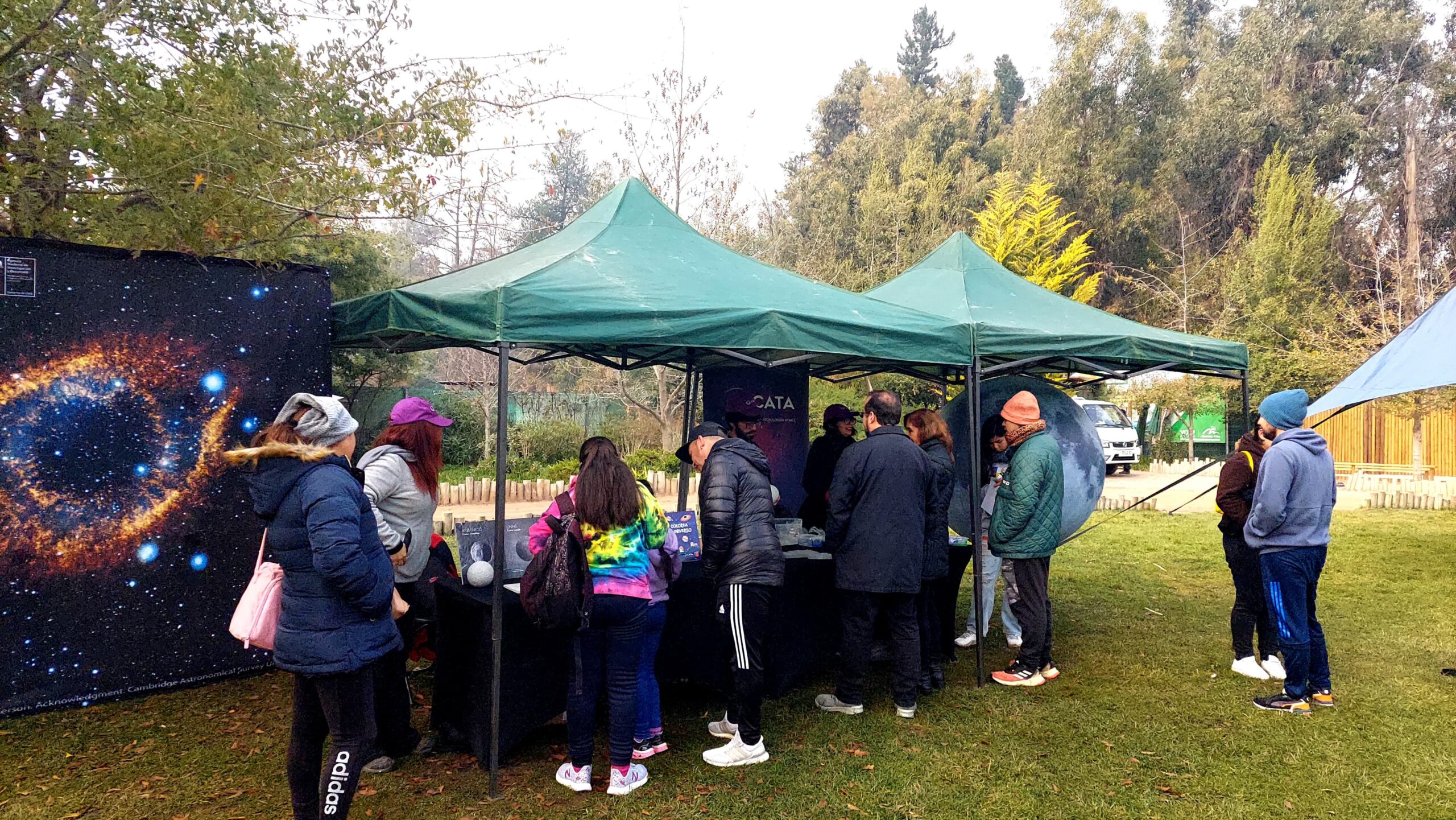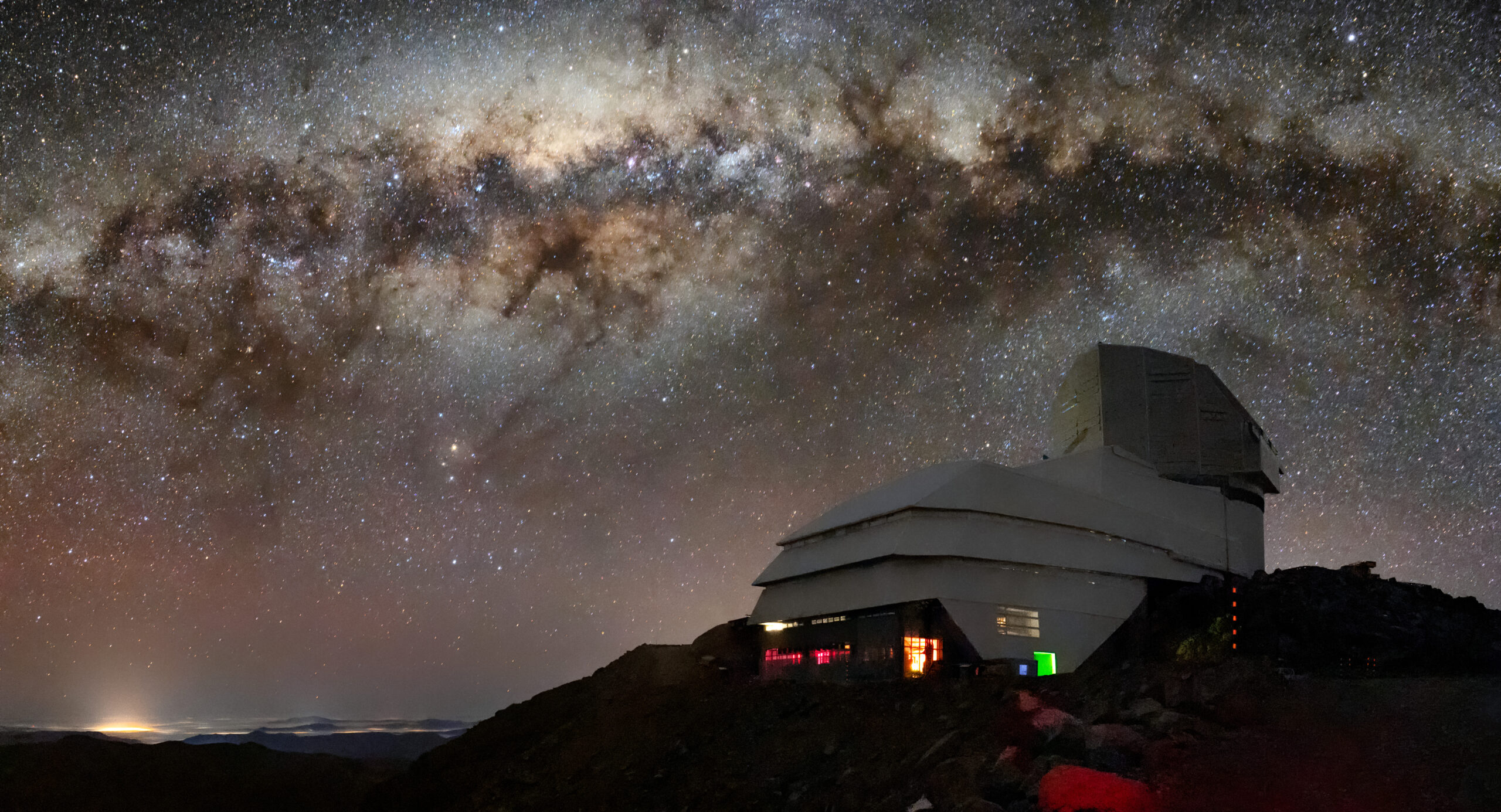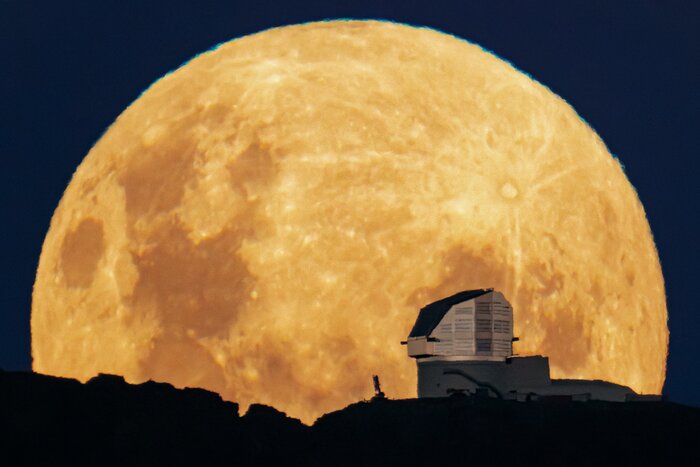
The second round of the “Comet of the Century”
During the next few days of October, Tsuchinshan-ATLAS will be seen, this time, over the western horizon and at sunset. Given its high luminosity, it could even be seen with the naked eye. José Utreras, CATA astronomer, gives recommendations to enjoy this stellar spectacle.
During the last few days, lovers and followers of astronomical events have been delighted with the appearance of comet C/2023 A3 (Tsuchinshan-ATLAS).
Dozens of beautiful photographs of amateurs to follow these celestial bodies captured its presence, when it was appreciated at dawn, over the mountain range horizon. The good news is that there is a second opportunity to see this comet, this time looking west, at sunset. Until October 22 it will have its highest visibility and, with some luck, it will be visible to the naked eye.
A few surprises
The so-called “Comet of the Century” travels at 290,664 kilometers per hour and comes from one of the farthest points of the solar system, so it is possible that its trajectory brings it close to our planet only once. It has already passed by the Sun and continues on its elliptical path approaching the Earth.
“From April to June the comet showed a peak in brightness and then started to go down. Combined with the fact that this object was never so exposed to sunlight coming from so far away, the Oort cloud, there was a suspicion that it would disintegrate as it passed close to the Sun, as has happened with other comets coming from that place, which did not happen. In the following days, if the comet continues to generate a tail by the volatile elements that escape due to the increase in temperature, the reflection of the Sun’s light could make it shine brighter than Halley’s comet. We could even see it, in the most optimistic case, with the naked eye with a little sunset light”, says astronomer José Utreras, in charge of Outreach Content at the Center for Astrophysics and Related Technologies (CATA).
In this second stage, Tsuchinshan-ATLAS will be visible between October 13 and 22, starting at 20:30 or 21:00, depending on the area of the country. At the beginning it will be seen slightly above the horizon and, as the days go by, it will increase until it is above 15 degrees, always looking towards the horizon.
“To see it, you must look towards sunset, a few minutes after it hides below the horizon. The best day will depend on where in Chile we are seeing the comet. In the northern zone, such as Arica, it can be seen from the 13th, although at a very low altitude. In the central zone, between the 14th and 15th, we will already have a good visibility. In the extreme south you will be able to see it between October 16 or 17”, explains José Utreras.
It is advisable to look for high places, away from the lights of the cities, such as a lookout with a clean and clear horizon. It could be seen with the naked eye, but it is necessary to wait until the days before October 15, to appreciate how the comet’s brightness evolves. It is best to use binoculars or a small telescope.
The CATA professional adds another striking fact about this comet, since it seems to move upside down.
“This sensation is generated because the tail does not point backwards, as would, for example, the hair of a moving convertible car, but points in the same direction of its movement. This is because the tail is moved by the solar wind, which are particles at high speed that escape from the Sun, so the tail always opposes the Sun and not necessarily the direction in which the body is moving,” he notes.
These comets are mainly made of ice, dust and rocks that when approaching the sun sublimate (transform into gas) and due to the pressure exerted by the solar wind this material forms the typical tail that extends for hundreds of thousands of kilometers and that is why they are so prominent in the sky.
Recent news
-
 Publicado el: 04/07/2025CATA researchers among the best in Chile according to international ranking Research.com
Publicado el: 04/07/2025CATA researchers among the best in Chile according to international ranking Research.com -
 Publicado el: 30/06/2025CATA Director strengthens ties in her second institutional tour
Publicado el: 30/06/2025CATA Director strengthens ties in her second institutional tour -
 Publicado el: 30/06/2025CATA celebrated Asteroid Day 2025 at the Pueblito de Las Vizcachas Park
Publicado el: 30/06/2025CATA celebrated Asteroid Day 2025 at the Pueblito de Las Vizcachas Park -
 Publicado el: 26/06/2025Vera C. Rubin: the telescope that watches the sky and anticipates the future of astronomy
Publicado el: 26/06/2025Vera C. Rubin: the telescope that watches the sky and anticipates the future of astronomy -
 Publicado el: 25/06/2025CATA researchers appointed as Full Professors at Universidad Andrés Bello
Publicado el: 25/06/2025CATA researchers appointed as Full Professors at Universidad Andrés Bello
Categories list
- Acknowledgments 19
- Astrobiology 5
- AstroCluster 1
- Black holes 13
- Corporativo 49
- Cosmology 4
- Descubrimientos 19
- Disclosure 46
- Exoplanets 13
- Extension 4
- Galaxies 17
- Galaxies formation 2
- Inter y Transdisciplina 2
- Local Universe 13
- Publications 5
- Sin categorizar 31
- Solar System 11
- Stellar formation 6
- Technology 9
- Technology Transfer 12





